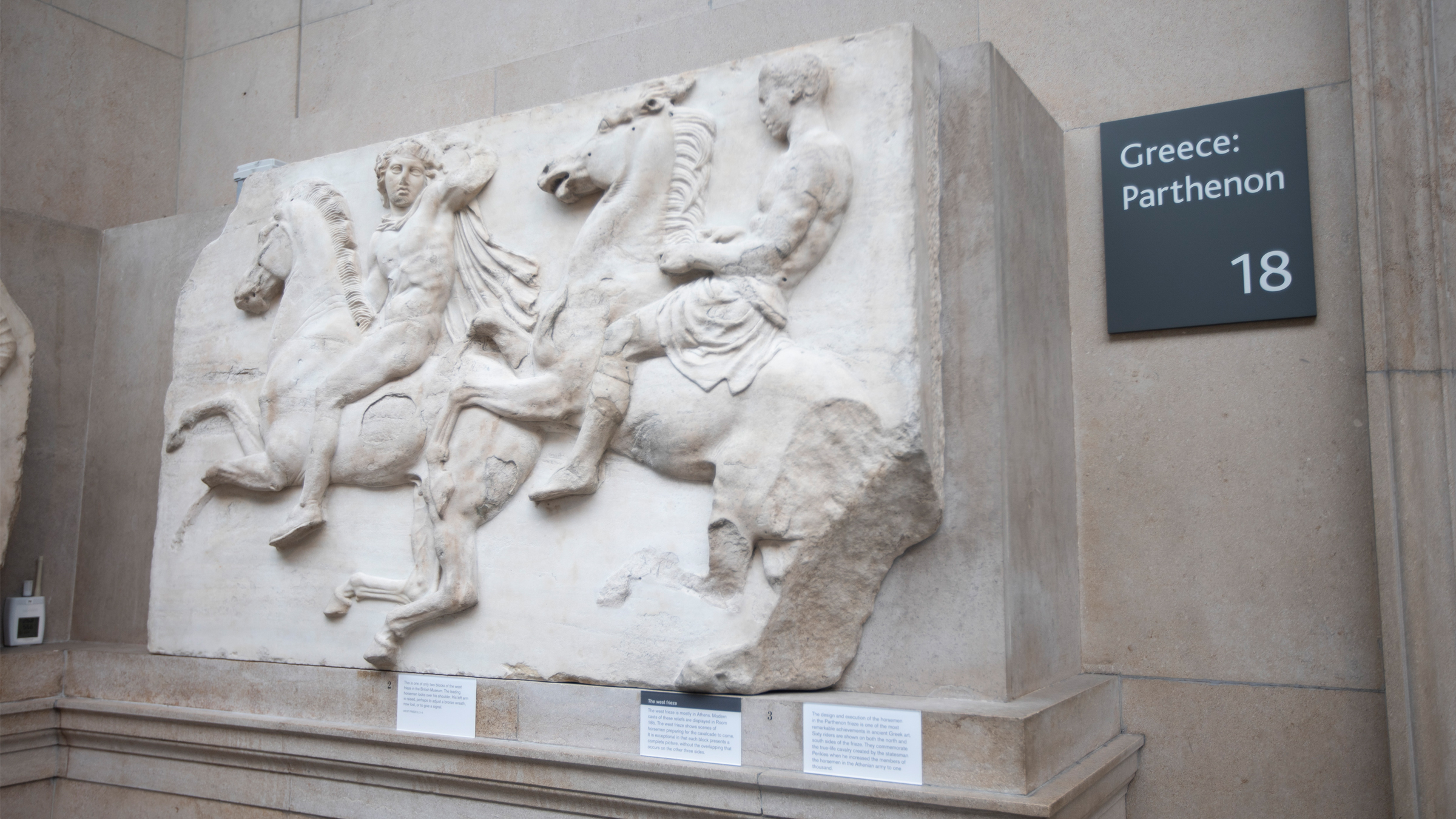The Elgin Marbles may finally return to Greece, 200 years after being removed by British nobility
The British Museum and the Greek government are reportedly in talks about returning the Parthenon Marbles, also called the Elgin Marbles, to Greece.

The British Museum and the Greek government are reportedly in talks about returning the Parthenon Marbles — also called the Elgin Marbles — to Greece, according to media reports.
The marbles are a series of sculptures that once decorated the exterior of the Parthenon, a temple on the acropolis of Athens that was built between about 447 B.C. and 432 B.C. and is dedicated to the goddess Athena.
The 2,500-year-old sculptures were brought to Britain in the first decade of the 19th century by Thomas Bruce, the seventh Earl of Elgin and Britain's ambassador to the Ottoman Empire, which at that time included Greece. Bruce received permission from the Ottoman Sultan to investigate the Acropolis (although the Acropolis Museum in Greece disputes that he had permission to remove the Parthenon's sculptures). Bruce shipped the artifacts to London, where they first went on display in 1807 and sold to the British government in 1816. Today, they are in the Duveen Gallery in the British Museum in London. Not all the sculptures were taken and some are still in Greece today.
Greece has been requesting the return of the marbles for decades, and made a formal request for the Parthenon sculptures' permanent return to Greece in 1983, according to the British Museum.
Related: 2,100-year-old burial of woman lying on bronze 'mermaid bed' unearthed in Greece
The Greek newspaper Ta Nea and the BBC reported that talks between the British Museum and the Greek officials started in November 2021, but a major problem in returning the Parthenon Marbles is that British law stipulates that artifacts in the British Museum cannot be deaccessioned, a process necessary in order to transfer full ownership. The U.K. government has indicated that it has no plans to change the law and the two sides are exploring alternatives that might be allowed under British law, such as an agreement that would enable the museum and Greece to share the sculptures.
If a deal does come about, a series of exhibitions featuring Greek artifacts that have never left Greece may come to the British Museum, taking up residence in place of the Parthenon Marbles, the BBC noted.
Sign up for the Live Science daily newsletter now
Get the world’s most fascinating discoveries delivered straight to your inbox.
In Greece, the Acropolis Museum is ready to house the Parthenon Marbles, according to the museum. Currently, plaster casts of the marbles, alongside ancient artifacts the Earl of Elgin left behind, are on display for the public, according to National Public Radio.
Mind-blowing sculptures
The Parthenon marbles in the British Museum include sculptures depicting the birth of the goddess Athena. According to myth, Athena was the daughter of Zeus and the goddess Metis. Zeus was afraid that Athena would become more powerful than him, so he swallowed the pregnant Metis whole. This did not stop the pregnancy and Athena became so big that the Greek blacksmith god Hephaestus had to split Zeus' head open with an ax; immediately, the goddess was born.
While the sculptures don't show the head-blowing birth, they do show the reaction of the gods, including sculptures depicting "the sun-god Helios and the heads of two of his four horses," that look as if they are rising up from the surface, wrote British Museum curator Ian Jenkins in his book "The Parthenon Sculptures" (Harvard University Press, 2007).
Other Parthenon marbles in the British Museum show a mythic battle between centaurs, half-human and half-horse creatures, and a legendary people known as the "Lapith," who triumphed over the centaurs and drove them out of their lands.

Owen Jarus is a regular contributor to Live Science who writes about archaeology and humans' past. He has also written for The Independent (UK), The Canadian Press (CP) and The Associated Press (AP), among others. Owen has a bachelor of arts degree from the University of Toronto and a journalism degree from Ryerson University.









